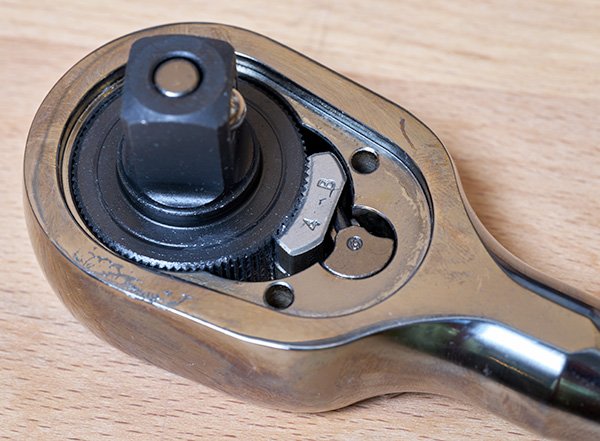
If you buy something through our links, ToolGuyd might earn an affiliate commission.
I recently looked inside a dual pawl 180T ratchet to see how it worked.
Dual pawl ratchets allows for a finer swing arc while also providing the strength of larger-toothed gearing.
There is a compromise – dual pawl ratchets often have greater head depths in order to fit in the extra pawl.
Shown above is what it looks like with the cover plate removed.

Here you can see the two stacked pawls more clearly visible, with the drive gear removed.
With just one pawl, this would be a 90T ratchet. But it has two pawls that are precision-engineered to have offset teeth. The peaks of one pawl line up with the valleys of the other.

When driving a socket with the ratchet, one pawl is engaged with the drive gear at all times.
When the ratchet mechanism returns in the reverse of your selected driving direction, one pawl is released and the other is engaged. The drive gear advances through 180 positions to make one full rotation, giving the 180T ratchet a minimal swing arc of just 2°.

When one pawl is engaged, the other is not.
Essentially, the two pawls take turns engaging with the drive gear. The alternate engagement of two pawls with the 90T gear creates the effect of a 180T ratchet.
If you swing the ratchet in the reverse direction, you will hear and feel 180 clicks as it makes one full rotation.
Why? Strength and durability. High torque delivery depends on a ratchet’s gear not slipping against its pawls. Dual pawl ratchet mechanisms allows for a shorter swing arc without compromising in strength and durability.

As mentioned, there’s a compromise, in how the ratchet head will be a little deeper in order to fit both pawls. The pawls cannot be made too narrow, because then the resulting reduction in engagement surface area would decrease the ratchet’s strength.






